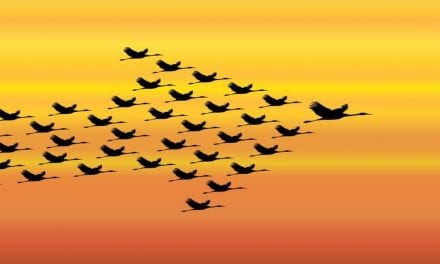Is your team tail-to-tail or wandering around outside the circle of safety?
By Leslie Quintanar
Aesop, Oxen, and Teambuilding
One of my favorite authors these days is Simon Sinek. He wrote the book Start with Why and has one of the most watched TED talks of all time on the same subject. I’m currently reading Leaders Eat Last in which he further develops the value of true leadership.
Circle of Safety
One of the illustrations he uses is the circle of safety and he supports it with the vivid picture set forth in one of Aesop’s fables. The tale features four oxen that remain safe when the prowling lion seeks to infiltrate by backing up, tail-to-tail, so that the lion is met with their horns at all angles. However, there came a day when they started quarrelling and each went their own way in the pasture. Ever the opportunist, the lion was able to kill them off, one by one, as they were no longer protecting one another. They ceased to be safe because they forgot how important it was to remain unified for their own well-being.
I shared this with one of the department head teams I am working with; we are recruiting for a new executive director, and every one of the team members has started within the last twelve months. Add to that dynamic that the building is a bit occupancy-challenged and you can see where I am going. It is tough going there these days. Therefore it is vital that they all present a united front for the sake of the residents and the health of the community.
When I visit them, I have emphasized the importance of teamwork and the necessity of learning to work through the conflicts, personality differences, and contrasting work styles to form a cohesive team. They haven’t arrived at this point . . . yet. As I meet with them one-on-one I’m encouraged that they all seem to be heading in the same direction. They simply haven’t reached the circle yet, but I believe they will get there eventually. After my last visit I received an email from one of those team members who was impressed with the visual of the oxen protecting one another and perpetuating the circle of safety through their commitment to one another. I was excited to read that she had understood the message and was impacted by its potential for success.
It Can Start with One
That’s where it often starts . . . with that one person who “gets it.” They, in turn, spread the message to others. Slowly it catches on. Those who want to be committed come together and those who want to go it on their own, often leave for what they perceive are greener pastures. It can take time, but with diligence — and continued emphasis on the “we” in lieu of the “I” — a solid circle of safety emerges. When that happens, challenges are met with a determined “all-in” mentality and culture changes from watching out for one’s own interest, to that of the team and those served. The lion has no entry and interlopers are met with horns of protection and a team in lockstep with one another for the advancement of their organization.
A Challenge: Count Horns and Not Tails
With this fable in mind, I challenge you to look at your teams and assess:
-
Are they tail-to-tail or wandering around outside the circle of safety?
-
Do you have those who constantly refuse to back in and stand in unison with other team members?
-
Has the threat of danger from outside sources worked to bring them closer or torn them apart?
-
Is trust lacking or fully developed?
-
Are they in the process of welcoming new members into their fold and going through those periods of necessary conflict to establish relationships?
-
Do they stand together when it really counts?
Finally, I’d like to ask you take that illustration with you when leading your teams; we want to see them all back up tail-to-tail so that they can protect one another and work as a group unified with one purpose. No matter what else is happening in the community, if this isn’t properly established, it will only be a matter of time before failure is the result.
Look for the horns on every side, and not tails wandering about on their own.








